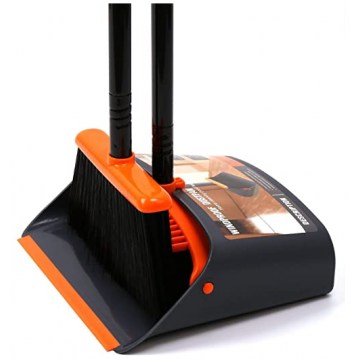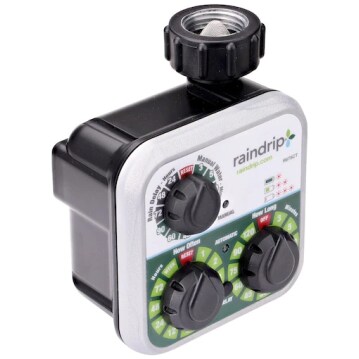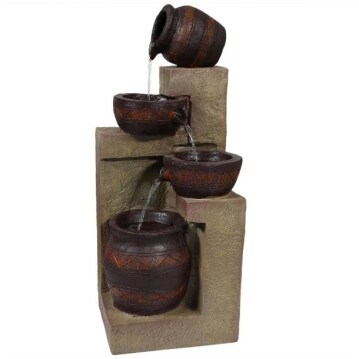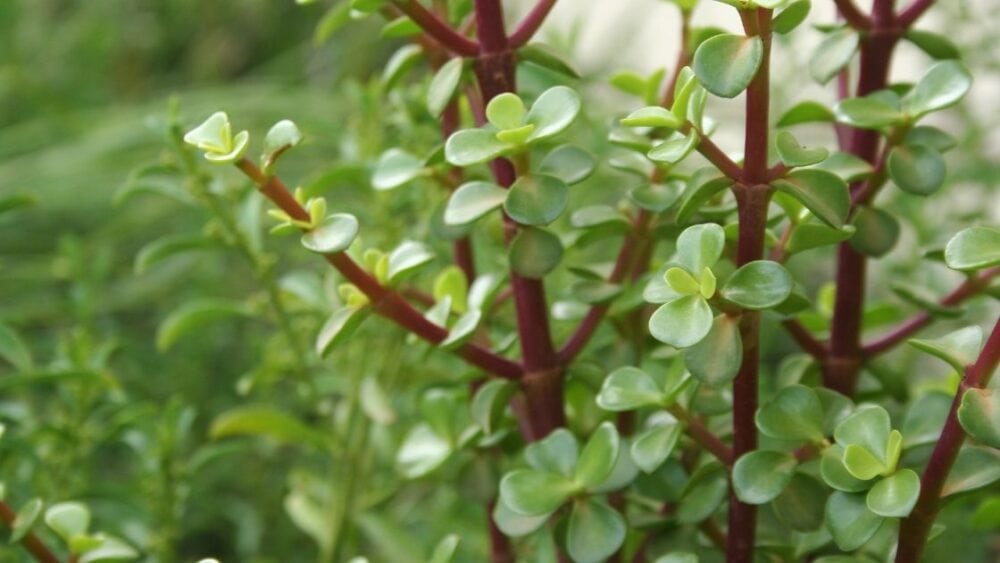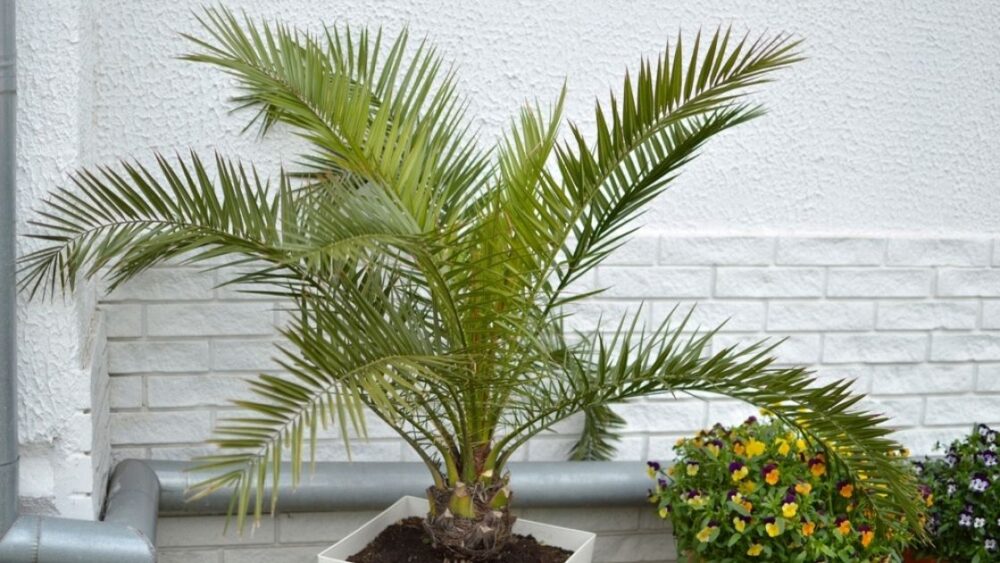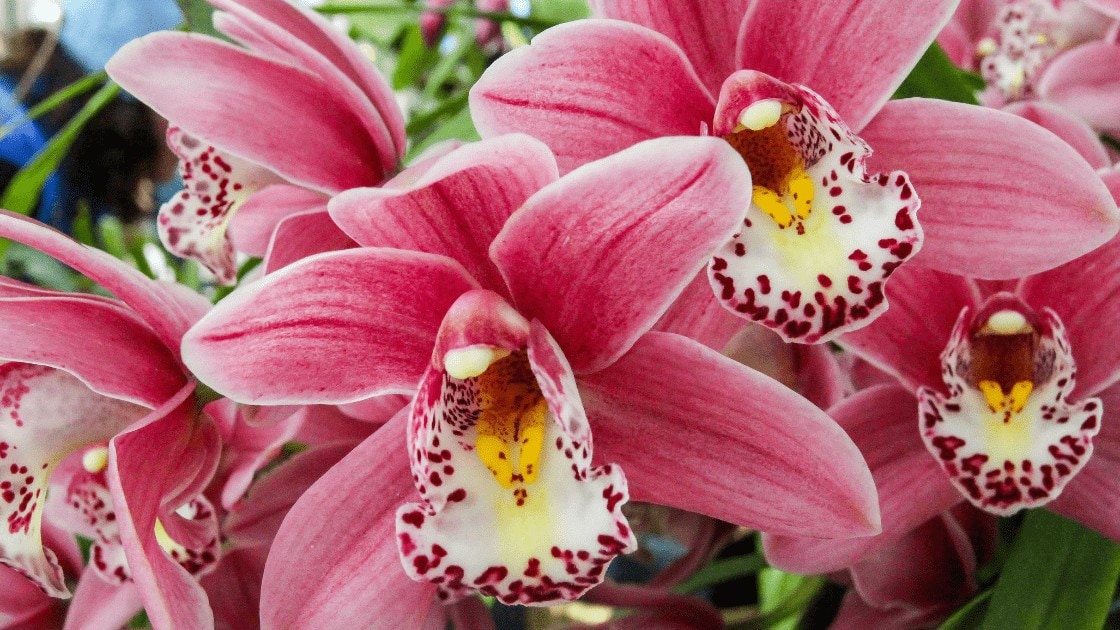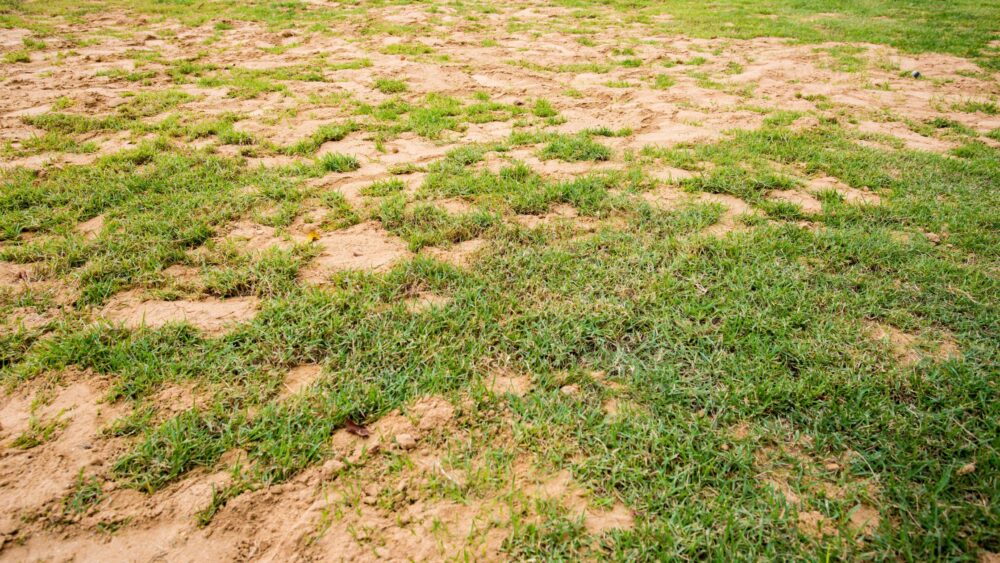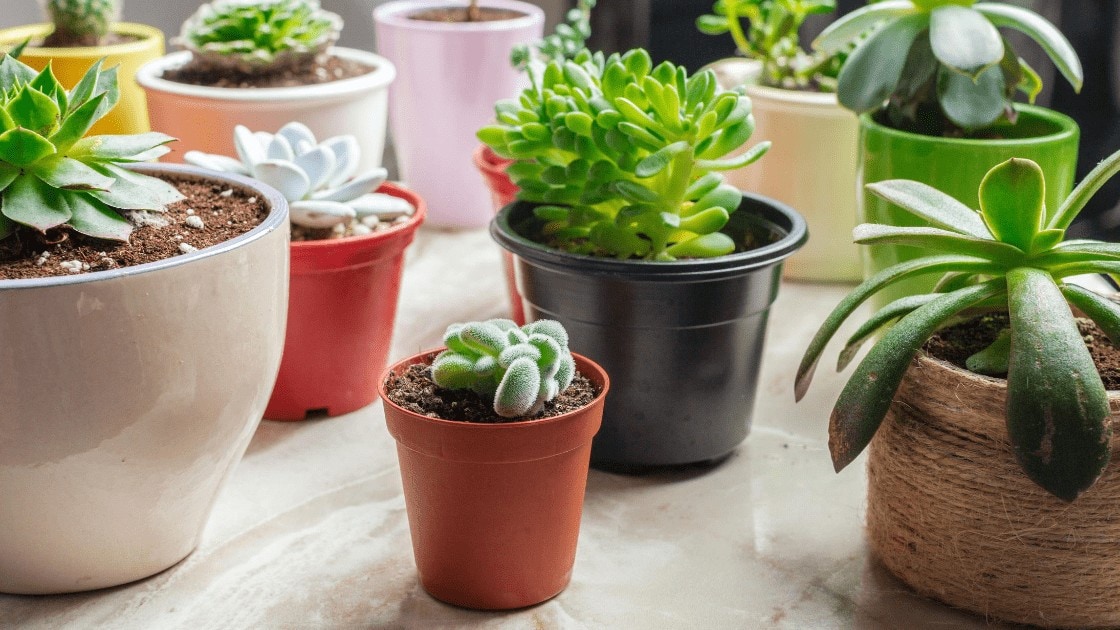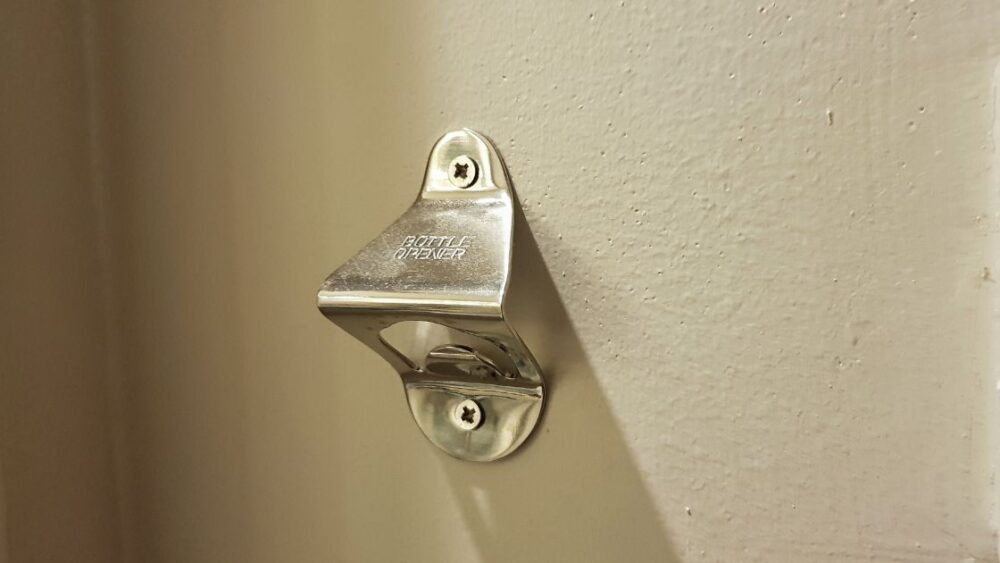
Misting is a somewhat controversial topic among plant enthusiasts – according to some people, frequent misting can lead to many problems and create an environment suitable for all sorts of pests and molds. However, it is clear that misting can be extremely helpful in some situations – it can quickly save a heat-stressed, wilting plant for example.
But is frequent misting necessary for healthy plants that aren’t exhibiting symptoms of drought stress? And how often should it be done? Also, which types of plants are more likely to benefit from misting and which ones are likely to be harmed? We’re about to explore those topics and more!
What is Misting and How Is It Done?
Misting involves covering the surface of the leaves with tiny water droplets – this is usually done with a mister/spray bottle. Regular, clean tap water is usually used, but a fertilizer can also be added – it is absorbed through the leaves, offering an alternative to soil feeding. Although this is a common method, misting does not substitute direct watering and irrigation for most plants.
Browse our Affiliate Products
Is Misting Different From The Rain In Nature?
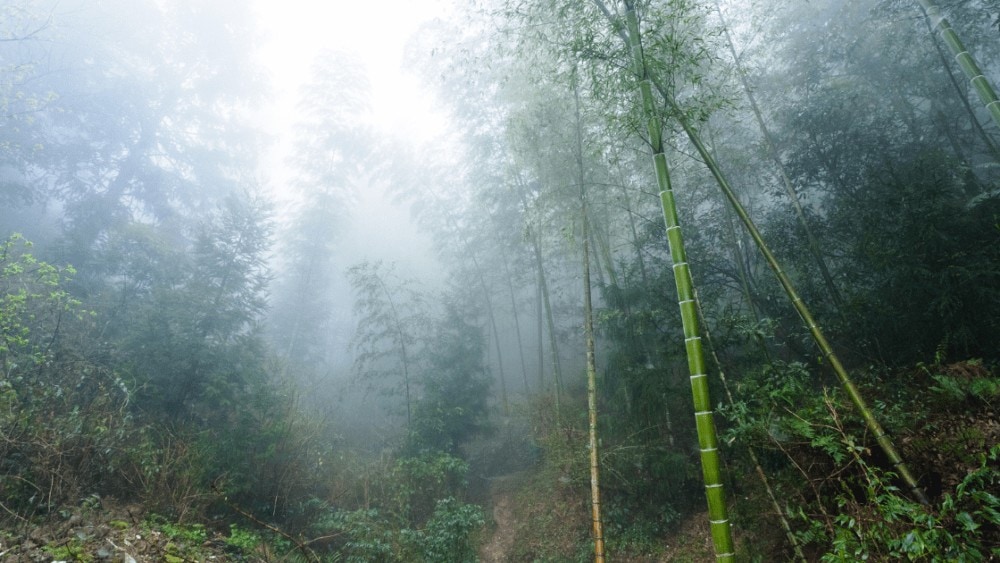
Misting is very different, because of the smaller drop size. Plant leaves soaked by heavy rain can take more than an hour to dry out, while the tiny droplets created by misting sprays can be gone in a few minutes, depending on the amount of mist and the airflow. However, depending on the type of leaf surface (smooth, hairy), the opposite phenomenon may be observed. We’ll get into this topic right now.
Which Plants Can Benefit From Misting and Which Ones Can Be Harmed By It?
There are two types of leaf surfaces in different plant species – wettable and non-wettable. Dieffenbachia for example has non-wettable leaves – any rain that falls on the plant quickly slides and drains out. Plants with fuzzy, hairy leaves usually have very wettable surfaces – the common primrose for example. Water droplets on those leaves ‘fuse’ together and create an even layer of water that can take hours to dry out. Those types of plants often grow in forests, so they simply weren’t forced to develop a mechanism for repelling water.
Misting with a spray bottle creates fine droplets that easily accumulate even on non-wettable leaves. This is unnatural for the plant, but isn’t necessarily harmful. However, too frequent misting can certainly enable mold and bacteria to grow, especially if too many organic nutrients from dust start accumulating on the leaves. To avoid this, I would wipe the surface of the leaves periodically with a paper towel.
This can’t be done for fuzzy-leaved plants and particles of dust readily accumulate on their surface. This is why frequent misting is generally not recommended for them. However, it can certainly be used short-term to temporarily cure wilting and heat-stress.
Some hairy-leaved plants have a very high density of hairs, on which the droplets stick, preventing contact with the leaf surface. Unlike raindrops, the tiny droplets in mist can pass in between the hairs, causing problems.
Some plants (like most carnivorous ones) require very high humidity, because they are adapted to growing low (near the ground) in damp environments. For those plants, daily misting is often recommended. However, a humidity dome is often a better option.
For care and growth of carnivorous plants, read our articles here.
We’ll explore the pros and cons of misting vs. a humidity dome later.
Products and Resources
What Are The Positive Effects of Misting?
- Misting raises the air humidity near the surface of the leaves. This stops the water loss from the stomata (the tiny openings on the surface, through which the plant breathes) and can even create an influx of water, temporarily curing wilting and heat-stress problems.
- Misting can be used as a tool for faster heat acclimatization of nursery plants – if a plant starts wilting when placed in direct sunlight, the wilting can be quickly stopped by misting. This allows you to stress the plant more and force it to adapt more quickly. However, misting is not recommended while the plant is exposed to direct sunlight, because of the magnifying glass effect of the water droplets.
- Daily misting may trigger some plants to develop larger, more attractive foliage. This is an adaptive mechanism – the plant senses that it has an unlimited water supply and therefore develops more leaf surface, without fearing it may start losing too much water because of it. This phenomenon is observed in most plant species.
- Misting can partially replace watering, which is useful for preventing and curing root rot. Root rot usually develops from over watering and lack of a drought period between each watering. This is a situation where constant, hourly misting is recommended until the roots dry out and recover.
- Daily misting often cures unexplainable leaf tip browning, which occurs in many species of household plants as the humidity drops too low.
How Often Should Misting Be Done
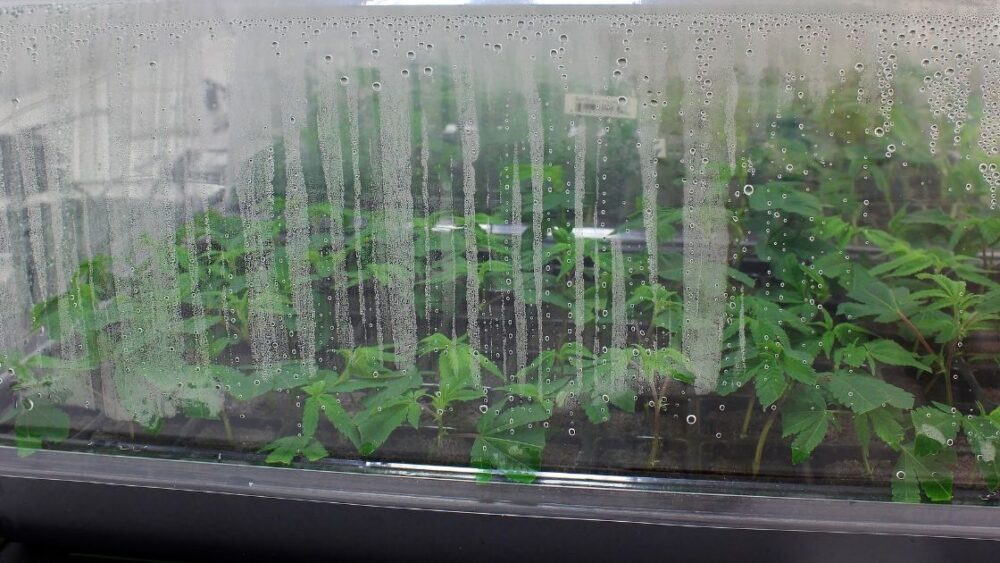
Misting once or twice a day is often recommended for tropical plants used to high humidity.
However, if your plant doesn’t show symptoms of drought stress (tip browning, wilting), misting isn’t really necessary. Outdoor plants can tolerate more frequent misting, because the wind will quickly remove the accumulated water droplets.
Misting vs. a Humidity Dome
A humidity dome is another way to raise the humidity and reduce the water loss from the leaves. However, humidity domes are only practical for tiny plants.
The enclosed space lacking air flow can severely slow down growth by reducing the CO2 exchange required by photosynthesis. Humidity domes are most practical for cuttings and seedlings, but are also often used for carnivorous plants, most of which are tiny and like high humidity.
Foliar Fertilization by Misting
Misting can fully replace soil feeding – all nutrients used for soil application can be absorbed directly by the leaves.
However, its best to use a fertilizer designed specifically for foliar feeding. Those types of fertilizers contain most of their nitrogen in the form of urea/amide instead of ammonium or nitrate. If you frequently use foliar feeding, salts will eventually accumulate on the surface, so some rinsing or wiping of the leaves may be necessary.
Possible Negative Effects of Misting and How to Avoid Them
Misting too frequently and having constant moisture on the leaves will lead to problems with most plants – without a sufficient drought period, bacteria and mold will inevitably start growing and cause leaf spots.
There is also no benefit to be gained from constant 100% humidity. If anything, the water layer on the leaves will create a barrier and slow down gas exchange, leading to slower growth. Even the leaves of semi-aquatic plants, like lotus and rice have evolved a water-repelling surface to prevent water accumulation.
Excessive misting with tap water can cause an accumulation of calcium salts on the surface – washing generously with excess water will get rid of those salt deposits. Wiping the leaf with a wet paper towel also works, but should only be done for plants with a smooth, non-hairy leaf surface. Foliar feeding can also lead to salt accumulation over time.
If proper watering is of concern that may not need much, you should try drip irrigation. Check out our article here. Drip Irrigation: Pros, Cons, and Garden Uses
Over-Misting Symptoms to Look Out For
Leaf spots and yellowing are the most common signs of over-misting. The symptoms of low humidity can be similar, but they will always start from the leaf tips and won’t develop evenly.
Final Thoughts
Misting is not strictly necessary for most indoor plants – however, it is a useful tool for curing temporary wilting caused by heat stress. Many gardeners still like to mist their plants daily and find that this improves their appearance – some plant species may develop larger foliage because of the misting.
Misting multiple times a day is not recommended for indoor plants, because it may lead to development of spots, yellowing and other symptoms. Wilting and browning of the leaf tips is the most common symptom of low humidity – misting once or twice a day is highly recommended in that case.
